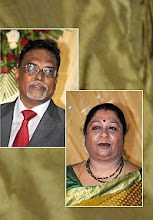1349- Telangana, Demerger:A long journey
______________________________________
Hyderabad: With the Lok Sabha passing the bill for bifurcation of Andhra Pradesh Tuesday, decks have been cleared for formation of Telangana as the 29th state in India. Following are the major events in the history of Telangana since 1948:
1948: Indian Army annexes princely state of Hyderabad, which comprised different regions, including Telangana.
1950: Telangana became Hyderabad State.
1952: First elections held in Hyderabad State.
Nov 1, 1956: Telangana merged with Andhra State, which was carved out of Madras State, to form Andhra Pradesh, a united state for Telugu-speaking people.
1969: 'Jai Telangana' movement for separate statehood to Telangana began. Over 300 people killed in police firing.
1972: 'Jai Andhra' movement began in coastal Andhra for separate Andhra State.
1975: Presidential order issued to implement six-point Formula, providing some safeguards to Telangana.
1997: BJP supported demand for Telangana state; in 1998 election, it promised 'one vote two states'.
2001: K Chandrasekhara Rao floated Telangana Rashtra Samithi (TRS) to revive Telangana movement.
2004: TRS fought elections in alliance with Congress, wins five Lok Sabha and 26 assembly seats. UPA includes Telangana issue in common minimum programme.
2008: TDP announced support for Telangana demand.
2009: TRS contested elections in alliance with TDP but its tally came down to two Lok Sabha and 10 assembly seats.
Sep 2: Chief minister Y S Rajasekhara Reddy died in helicopter crash, triggering political uncertainty.
Oct 2009: Chandrasekhara Rao began fast-unto-death for Telangana state.
Dec 9: Centre announced decision to initiate the process for formation of Telangana state.
Dec 23: Following protests in Rayalaseema and Andhra regions (Seemandhra) and en mass resignations of MPs and state legislators, centre put the process on hold citing need for consensus.
Feb 3, 2010: Centre set up five-member Srikrishna committee to look into Telangana issue.
Dec 2010: Srikrishna committee submitted its report, suggested six options
July 30, 2013: UPA coordination panel and Congress Working Committee decided to carve out Telangana state. Protests in Seemandhra.
Oct 3, 2013: Union cabinet approved the proposal to divide Andhra Pradesh. A Group of Ministers (GoM) was constituted to prepare the roadmap after consultations with all stakeholders.
Oct 25, 2013: Chief minister N Kiran Kumar Reddy raised banner of revolt against Congress leadership. He wrote letters to president and prime minister urging them to stop bifurcation process.
Dec 5, 2013: Union cabinet approved draft Andhra Pradesh Reorganisation Bill 2013 prepared on the basis of recommendations by the GoM. Bill sent to President Pranab Mukherjee with a request to make a reference to Andhra Pradesh legislature to obtain its views under Article 3 of the Constitution.
Dec 9: The President gave time till Jan 23 to the state legislature to give its views.
Dec 12, 2013: Bill brought to Hyderabad in a special aircraft and amid tight security.
Dec 16, 2013: Bill introduced in both houses of state legislature amid clashes between Seemandhra and Telangana lawmakers.
Jan 8, 2014: After disruptions for several days, debate finally began on the bill in assembly and council.
Jan 21, 2014: State government sought four more weeks to debate the bill. The President gave one week.
Jan 27, 2014: Chief Minister Kiran Kumar Reddy gave notice to assembly speaker for a resolution to reject the bill.
Jan 30, 2014: Amid ruckus, both houses of state legislature passed by a voice vote official resolutions, rejecting the bill and appealing to the President not to send the bill to parliament.
Feb 5, 2014: Chief minister staged sit-in in Delhi to oppose bifurcation.
Feb 7, 2014: Union cabinet cleared the bill and rejected Seemandhra leaders' demand to make Hyderabad a union territory. Bill sent to the President for his approval to table it in parliament.
Feb 11, 2014: Congress expelled six MPs from Seemandhra for moving no-confidence motion against government.
Feb 13, 2014: Bill introduced in Lok Sabha amid clashes between MPs from Seemandhra and Telangana. L. Rajagopal, a MP from Seemandhra, used pepper spray in the house. Speaker suspended 16 MPs, including Rajagopal, for rest of the session.
Feb 18, 2014: Lok Sabha passes Telangana bill
______________________________________
Labels: Events, Hyderabad, India, Indians/ Telugu, Telugu language, Telugu/ culture



















